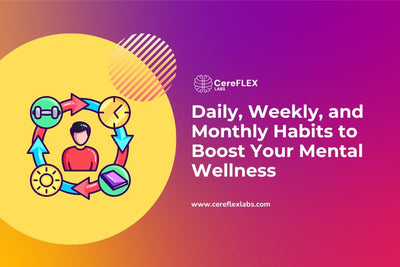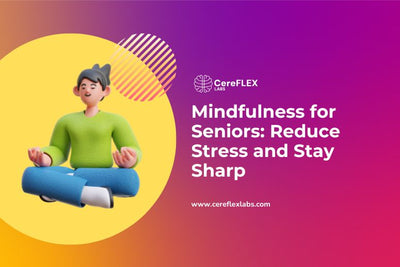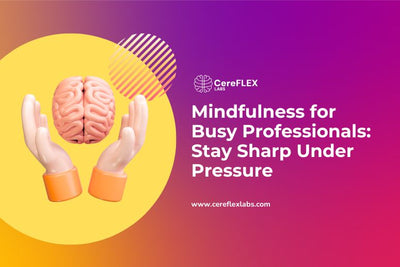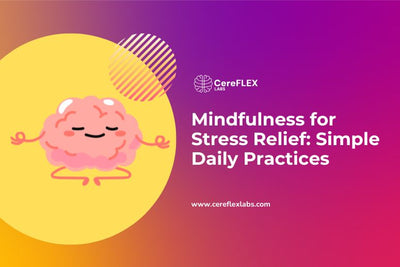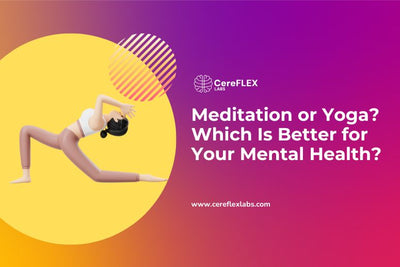You’ve found the right nootropics—now it’s time to make the most of them. One of the most overlooked yet critical factors in how well brain supplements work is timing.
When you take your nootropics affects how quickly they kick in, how long they last, and how they interact with your body. For instance, caffeine early in the day may sharpen focus, while magnesium in the evening supports deeper rest.
Some nootropics absorb better on an empty stomach, while others require food for proper bioavailability. Aligning your intake with your body’s rhythms and your daily goals can boost clarity, energy, and emotional resilience.
By understanding your body’s natural cycles and the science behind each ingredient, you can get more consistent, targeted results from your nootropic stack.
Here is the Quick Answer |
|
Timing matters when taking nootropics. Stimulants like caffeine and L-theanine are best in the morning for focus, while calming compounds like magnesium and lion’s mane work well in the evening. Some nootropics are absorbed better with food, others on an empty stomach. Align your intake with your goals, track your response, and adjust your routine as needed for optimal brain support throughout the day. |

Why Timing Matters for Nootropics
Taking nootropics at the right time can be the difference between subtle improvement and no effect at all. Your body runs on internal rhythms that influence everything from hormone release to alertness—and your supplements need to fit into that schedule.
Circadian Rhythms and Cognitive Performance
Your brain doesn’t operate at full capacity 24/7. Mental sharpness naturally peaks and dips throughout the day due to circadian rhythms—the biological clock that regulates sleep, energy, hormone production, and cognitive function.
- Morning to early afternoon: This is when most people experience the highest levels of alertness and mental energy. It’s the ideal window for stimulating nootropics that enhance focus, motivation, and productivity.
- Late afternoon to evening: As cortisol and dopamine levels begin to fall, the brain prepares for rest. Calming nootropics that reduce stress or promote sleep are best taken during this phase.
Syncing your nootropics with these natural patterns can make them more effective and reduce the risk of side effects.
Metabolism, Absorption, and Bioavailability
To work properly, nootropics must be absorbed, metabolized, and delivered to the brain—and this process is influenced by timing, diet, and digestion.
Key factors include:
- Fed vs. fasted state: Some nootropics (like caffeine or L-theanine) are more potent on an empty stomach. Others—especially fat-soluble compounds like certain racetams—require food, particularly dietary fat, for optimal absorption.
- Time of day: Your metabolism slows in the evening, which can affect how quickly or efficiently your body processes supplements.
- Supplement stacking and food interactions: Taking multiple supplements or combining them with certain foods may reduce effectiveness or cause digestive issues.
Understanding these dynamics allows you to tailor your intake for better focus, mood, or relaxation—depending on your goal.
Understanding Half-Life and Onset Time of Nootropics
When you take a nootropic, two key factors influence how it performs: onset time (how quickly it starts working) and half-life (how long it stays active in your body). These determine when you feel the effects—and how long they’ll last.
Let’s look at three examples:
- Caffeine usually kicks in within 30 to 60 minutes and stays active for around 5 hours. That’s why it’s best taken in the morning to avoid interfering with sleep.
- L-theanine, often combined with caffeine to smooth out its stimulating edge, has a gentle onset around the 1-hour mark and a shorter half-life of about 1 to 2 hours.
- Modafinil, a prescription wakefulness agent, takes 1 to 2 hours to become effective and lasts up to 12 to 15 hours—making it a long-acting option that’s not suitable late in the day.
These figures show why timing matters. Taking a long-lasting compound too late can keep you wired when you want to wind down, while short-acting ones may need strategic scheduling to avoid dips in focus or energy.
Understanding the pharmacokinetics of each nootropic helps you match the timing with your schedule, minimize side effects, and get the most consistent results.
Avoiding Overlap or Interference
Taking nootropics at the wrong time—or alongside conflicting supplements—can reduce benefits or even cause unwanted side effects. Thoughtless timing doesn’t just waste your stack; it can undermine your focus, sleep, or digestion.
Here are common timing mistakes and how to avoid them:
Sleep Disruption
Stimulants like caffeine or modafinil can linger in your system long after their noticeable effects wear off. Taking them too late in the day may interfere with sleep, even if you still feel alert.
Digestive Discomfort
Some nootropics—especially complex capsules or fat-soluble compounds—can cause nausea or stomach upset if taken on an empty stomach. Others, like amino acids, may be less effective when taken with protein-rich meals.
Conflicting Effects
Mixing calming and stimulating substances too closely can cancel out or blunt their benefits. For instance, stacking ashwagandha (a stress reliever) with caffeine (a stimulant) might leave you feeling mentally tense but physically sluggish.
To avoid overlap, plan your timing around the effects of each compound. Space out your doses throughout the day to maintain smooth energy without crashes or interference.
Best Time to Take Nootropics by Goal
The best time to take nootropics depends on what you’re trying to achieve. Whether it’s sharper focus, stress relief, or better sleep, timing your intake to match your goals helps maximize their benefits.

For Focus & Productivity
Best Time: Morning to early afternoon
Start your day with stimulating nootropics that support energy and mental stamina. Compounds like caffeine, L-theanine, and Rhodiola rosea work with your brain’s natural morning energy spike, enhancing dopamine and norepinephrine activity.
Take them before demanding tasks such as studying, meetings, or creative work—but avoid late-day doses to prevent sleep interference.
Use cases: Work blocks, studying, morning workouts, presentations.
For Stress & Mood Support
Best Time: Midday or early evening
Stress-modulating nootropics—like Ashwagandha, Bacopa monnieri, and L-tyrosine—help regulate cortisol levels and rebalance neurotransmitters affected by fatigue. They’re ideal when you’re coming down from a high-stress period or winding down from mental exertion.
This timing supports emotional balance without sedating you too early in the evening.
Use cases: Post-work decompression, burnout recovery, late-day focus resets.
For Relaxation & Sleep
Best Time: 1–2 hours before bed
For better rest, take calming nootropics like magnesium threonate, lion’s mane, or L-theanine before bedtime. These compounds may promote GABA activity and reduce brain stimulation—helping your mind transition into sleep mode.
Avoid pairing them with stimulants in the evening, which could reduce their effectiveness.
Use cases: Bedtime rituals, insomnia relief, post-screen relaxation.
How to Create Your Nootropic Schedule

A smart nootropic routine isn’t just about what you take—it’s also about when and how you take it. A personalized schedule helps you get steady results, avoid overstimulation, and adapt your stack to your lifestyle.
Here’s how to build a schedule that works for your brain and your goals:
Define Your Goals
Start by asking yourself: What am I hoping to improve?
Is your goal sharper focus in the morning? Better stress management after work? Deeper sleep at night?
Clarifying your goals helps you decide:
- Which nootropics to include
- When to take them for optimal impact
- How often to use or rotate them
Every brain is different. Aim for a plan that fits your mental and physical needs.
Find the Right Dosage and Frequency
Some nootropics are best used daily, while others work well occasionally. Take time to learn:
- Which compounds benefit from regular dosing
- Which ones need cycling to avoid tolerance
- Your personal dosage sweet spot—enough to feel benefits, without side effects
Experiment mindfully. Less is often more when it comes to brain health.
Track Your Progress
Even well-studied nootropics don’t affect everyone the same way. Keep a simple log or app record that tracks:
- What you took and when
- How you felt mentally and physically
- Sleep quality, energy levels, and focus
- Any side effects or inconsistencies
This info helps you fine-tune your stack and make smarter changes.
Balance Consistency with Flexibility
A regular routine builds momentum, but flexibility matters too.
Some days require extra support—others, a break. Listen to your body.
Adapt your timing based on:
- Sleep patterns or travel
- Stress levels and workload
- How you feel physically or emotionally
Your nootropic schedule should support you—not feel like another to-do list.
Conclusion
When you take nootropics matters just as much as which ones you choose. Aligning your intake with your body’s natural rhythms and specific goals—like focus, stress relief, or sleep—can significantly boost their effectiveness.
Whether you’re aiming for productivity in the morning or mental calm at night, thoughtful timing helps you avoid overstimulation, wasted doses, and inconsistent results.
At Cereflex Labs, we make timing simple with our AM/PM Protocol—a science-backed system designed to support brain health around the clock.
- Brain Morning Formula: Start your day with clarity, energy, and sharper mental performance.
- Cognitive Support Evening Formula: Wind down with support for memory, relaxation, and recovery.
One routine. Two targeted formulas. 24-hour cognitive support.
Want a smarter way to take nootropics? Explore the AM/PM Protocol and see how optimized timing can elevate your mental performance—naturally.


